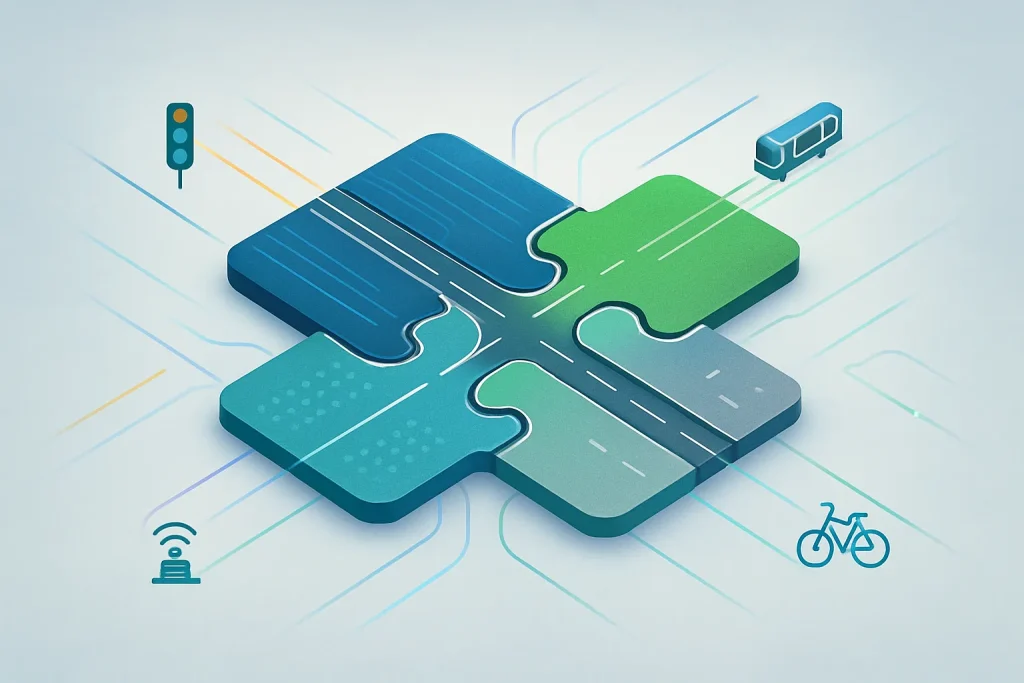Smart infrastructure interoperability is crucial for the future of connected cities and systems. This article presents key strategies for ensuring seamless integration, drawing on insights from industry experts. From implementing robust API governance to fostering cross-sector collaboration, these approaches pave the way for more efficient and adaptable smart infrastructure.
- Implement End-to-End API Governance Early
- Adopt Infrastructure as Code for Standardization
- Establish Universal Interoperability Standards First
Implement End-to-End API Governance Early
Put in place end-to-end API governance on day one. Integration is too often an after-thought in too many organizations and they then wonder why they cannot get their traffic management system to talk to their energy grid.
I faced this nightmare situation when I consulted for a mid-sized city which had spent 2.3 million dollars over three years on a variety of smart systems. Their parking sensors, traffic lights and waste management platforms were basically digital islands. All the vendors were to provide seamless integration, but since data standards and communications were not standardized, integrating them necessitated the creation of custom middleware, at another cost of $400,000.
My experience in constructing education platforms helped me to learn that everything downstream is defined by the architecture of the system. The resolution that I have put in place is to have a common data schema and ensure that all future procurement will have OpenAPIs. We saved on integration costs by 67 percent and deployment time which used to take months to weeks.
The toughest part is not the technical part, it is the organizational. Various departments tend to choose their own vendors and this makes a patchwork of incompatible systems. Cities should have a chief technology officer whose decisions are vetoed on purchases that are not interoperable.
My suggestion: The up-front costs of integration architecture in your smart city budget should be 20 percent. Document everything. Connectivity should be tested prior to complete implementation. The initial outlay is worth the investment when you are not re-inventing systems every two years. I have designed systems that have thousands of users per day and I can tell you that integration issues grow exponentially with time.
 Mircea Dima
Mircea Dima
CTO / Software Engineer, AlgoCademy
Adopt Infrastructure as Code for Standardization
Based on my experience implementing large-scale IT infrastructure, I would strongly recommend adopting infrastructure as code practices to ensure interoperability between smart infrastructure systems. By codifying your infrastructure configurations, you create standardized environments that allow different platforms to communicate effectively without compatibility issues.
The biggest interoperability challenge I’ve encountered was managing inconsistencies across multiple deployment environments, which led to systems that couldn’t properly exchange data or work together. We overcame this by implementing strict standardization through containerization and infrastructure as code, which ensured consistent configurations across all environments. This approach not only solved our immediate interoperability problems but also created a foundation for easier integration of new systems in the future.
 George Fironov
George Fironov
Co-Founder & CEO, Talmatic
Establish Universal Interoperability Standards First
Pursuing cutting-edge platforms without first establishing universal interoperability standards is the biggest error I observe cities and companies making with smart infrastructure.
Interoperability has been a constant problem at our company, where we work on computer graphics and generative AI in addition to working with partners to create digital twins for smart cities. In one project, public safety platforms, electricity grids, and traffic control systems were connected. Every system has its own unique data formats and APIs and was purchased from a different vendor.
Data silos are our largest obstacle. APIs weren’t made for cross-platform real-time communication, even when they were available. Their integration hindered innovation and necessitated expensive middleware.
 Qixuan Zhang
Qixuan Zhang
Chief Technology Officer, Deemos







